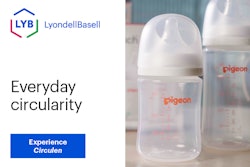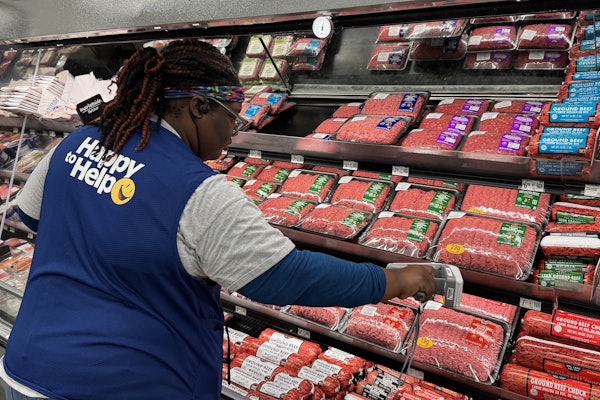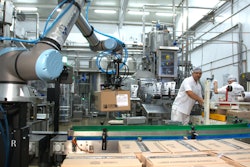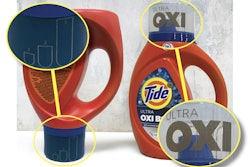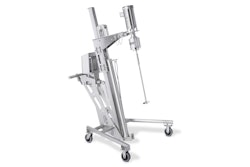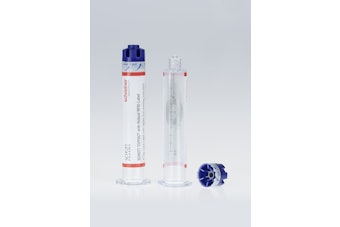In these days of mega corporations, packaging departments often are decentralized with only a core group at corporate headquarters. In other companies, corporate packaging is more a packaging development group that guides and supports the packaging and engineering staffs at the various plants. Some are outsourcing certain functions, while still others are now adding staff to reduce the cost of outsourcing.
Just as there is no one blueprint for a package, there is no one plan or framework for the part of a company that is responsible for that blueprint. It’s also safe to say that often a packaging department is a reflection of the person or persons at the top.
To get some ideas about what today’s packaging leaders see on the horizon for their packaging departments, Packaging World interviewed a selected number of packaging managers at some of today’s largest and most creative manufacturers. These influential packaging people include Curtis Babb, director of corporate packaging, Coors Brewing Co., Golden, CO; Dr. Ray Bourque, director of packaging, processing, and product R&D, Ocean Spray Cranberries, Lakeville-Middleboro, MA; John Hunt, packaging equipment specialist, 3M Co., St. Paul, MN; Christian Keator, packaging engineering department manager, BIC Corp., Milford, CT; Alison Kent, corporate packaging manager, Hewlett-Packard, Palo Alto, CA; and Kelley Rowles, associate director of package engineering, McNeil Consumer & Healthcare Products, Fort Washington, PA.
In addition, we included comments from Douglas Moyer of Ford Motor Co., Dearborn, MI, and Ben Miyares, vice president of industrial relations, Packaging Machinery Manufacturers Institute (Arlington, VA), who works with the Packaging Management Council.
Virtually all of the experts agree on:
• Moving to consolidate the number of suppliers they buy from;
• Needing to make packaging contributions more visible in the company;
• Trending toward more cost-cutting rather than on more creative work;
• Partnering more closely with vendors; and
• Needing to have more creative and versatile expertise on corporate staff.
Decentralized packaging
Both Alison Kent of HP and BIC’s Christian Keator say their corporate packaging staff is limited largely to support functions for packaging people at their company’s plants. “We have many different businesses that operate in different regions,” Kent says. “At those locations, there may be a packaging organization as small as one person, or up to 20 people.
“My group at corporate HP consists of five people, and our job is to coordinate packaging work across the businesses and regions where there are benefits to centralization. This way we get the benefits of decentralization like speedy decision-making and customization, along with the benefits of a central structure, such as minimizing redundancy of activity.”
At BIC, Keator says his corporate group works more on package development or packaging engineering, rather than on packaging equipment automation. However, the group offers assistance to its plants when it comes to equipment suppliers and technical specifications and qualifications.
“We get involved in new equipment as it relates to automating a non-automated packaging process by working with the manufacturing facility. Once the automated process is installed and operating, manufacturing engineers maintain the day-to-day operation. So we provide a support function for the manufacturing locations,” says Keator.
Ocean Spray’s Ray Bourque says his department functions similarly but goes a little farther. “When equipment is necessary to run a new package—whether it’s our supplier’s equipment or our own manufacturing machinery—we’re very involved in the selection process, the setting of specifications, and the start-up,” Bourque says.
Improving packaging’s visibility
“Visibility of the packaging department within the company is something I think is critical for the future,” 3M’s Hunt points out. “Our objective is to continually promote throughout our business units the importance of packaging and the direct impact it has on successful, sustainable product lines.
“We like to present ourselves as a ‘one-stop shop’ corporate packaging center through which is funneled all packaging-related activities,” says Hunt. “It’s a matter of getting out and selling to them the efficiencies of coordinating through us the details of packaging design, materials, and specifications.”
At Hewlett-Packard, Kent describes how her corporate packaging group uses a “dotted-line” structure with packaging people throughout HP’s far-flung businesses. “I run what we call a Packaging Management Council, made up of a group of managers who come from all businesses and regions. We meet monthly by phone and twice a year in person to work on issues that have broad application throughout the company.” She goes on to describe several other communications methods like monthly conference calls and newsletters.
Ocean Spray focuses more on its headquarters staff. Bourque says his group has packaging engineers that report to the company’s Center of Functional Excellence at headquarters, but they also have “dotted-line” responsibilities to business units. “They’re responsible for packaging in those business groups, but because they’re part of the Center here, we can move resources around as the work requires,” Bourque says. Even packaging personnel that support international operations are located at corporate headquarters, and work closely with the Center.
Ford’s Douglas Moyer has already fought the fight. “As packaging professionals, we should drive packaging engineering’s strategic value higher into our organization’s psyche. It becomes our task to enlighten our corporations beyond [management’s] perspectives of packaging enginerering,” he told the WorldPak conference at Michigan State University earlier this summer.
Little agreement on outsourcing
Putting the packaging department into some perspective, Ben Miyares of PMMI notes: “In the ’80s, the classic organization had a director of packaging who was responsible for both package development and packaging operations. He probably had sub-chiefs and lab guys and such—whatever he needed—but it was all internal,” Miyares says.
“Now the internal packaging department is not as extensive, not only in terms of numbers of staff, but also in breadth of experience. Consequently, there’s a tendency to rely to a greater extent on the suppliers...to serve as a consultative partner. What’s being eliminated as we move into the future is the classic buyer-seller wall,” says Miyares.
Moyer reported that Ford announced an initiative a year ago to outsource several activities, including the packaging engineering part of its customer service. The company recognized that a part of the packaging engineering department’s function was strategic and “cannot be entrusted outside of Ford Motor Company.”
Finally, the packaging engineering department became responsible for “developing the outsourcing deployment plan.” Ford retained in-house strategic elements for brand protection, cost analysis, and customer satisfaction, as well as retaining oversight of non-strategic functions like specification writing.
Very little of that is going on for Hewlett-Packard’s package testing. “We keep most of our core package-testing functions in-house because outsourcing tends to be more expensive,” Kent says. “Plus for many of our products the lifecycle is short. To outsource package testing, as others have done, you really have to be able to tell a laboratory what the performance specs of your products are. And when products change so often, just having that information handy can be a challenge.” Plus, she adds, when you have products that can cost thousands of dollars, “you can’t afford to take chances.” Aside from package testing, HP is definitely involved in outsourcing.
Access to design services
Kent did say that, as part of HP’s preferred supplier program, a vendor provides access to its design services. “But we have certainly cut back on our use of outside organizations, whether consultants or designers,” she adds.
Curtis Babb of Coors sees both sides of the outsourcing issue. He says, “Companies will be very judicious in trying to leverage their resources through universities, consultants, and other forms of outside sourcing on projects. However, companies that really understand their business and the value that a good packaging department can provide are unlikely to forget those contributions.”
At McNeil, Kelley Rowles says her company has re-evaluated the package engineering department on a cost basis. She describes the result: “We actually downsized two consultants that were providing continual support and hired two new full-time people as a cost savings. But,” she adds, “that’s a big leap for an organization—to look at total dollars instead of head count.”
Although McNeil may be broadening its in-house packaging team, at least one packaging executive interviewed by PW wonders if a different course might be appropriate.
“Any thoughts about the future of packaging have to begin with a clear understanding of what our core skills are,” says the executive, who prefers not to be identified. “Within the pharmaceutical industry, we spend a lot of money researching new drugs, and we’re very good at that. If we believe packaging has a role to play in the delivery of these products, we will surely invest more resources in bringing new formats to market. However,where packaging styles remain standard across different companies, and the drug molecules themselves remain the sole source of product differentiation, perhaps we can also envisage future scenarios where packing lines are shared between companies or contract manufacture increases.”
A team approach
Rowles says McNeil has recently combined its equipment and materials group. “So now we’re looking to do some cross-training of skill sets to allow us to bring a more ‘systems approach’ to our corporate packaging support.”
Much the same has occurred at 3M. “We’ve always had an excellent group of packaging engineers skilled in the areas of packaging design and materials. Just recently, we’ve enhanced the capabilities of this group by adding engineers knowledgeable in packaging equipment,” Hunt reports. “This new alignment will help to ensure that packaging design and materials will be very compatible with the equipment and vice versa. We feel that this will be very helpful in ‘selling’ the single-source packaging organization.”
Or, as Coors’ Babb and Ocean Spray’s Bourque predict, packaging departments need to have a broader set of skills than in the past. “Not every company can afford to have staffs of dozens of engineers, each highly trained and working in specialized areas,” Babb notes.
“As companies try to work smarter and more efficiently, I think you’ll see new skills added to the people currently in packaging. You might see packaging people trained in understanding statistics for better-designed experiments or tests or capability studies. Skills like project management and new product development can be learned with some programs out there. It’s all about ‘How do you do something different that your competition doesn’t do?’ How can your department gain a competitive edge, a strategy execution others don’t have?”
For Ocean Spray, there’s a trend towards broader technical capabilities on staff and less reliance on suppliers. “We’re expanding our CAD [computer-aided design] capabilities, so that we can do more of the packaging design work before we go to suppliers,” Bourque says. “In the past, we were much more willing to use suppliers to do that.”
This also addresses the issue of each supplier having a “custom” container or component. “Many suppliers wanted to have slight changes in the design that were not obvious to the consumer, but provided technical benefits to them and their processes,” Bourque explains. “Now we’re striving to standardize, to get as many of these ‘variables’ out of the designs as we can. That’s why we’re now more likely to develop our own package designs, using the consumer insights and cost initiatives we’re focusing on.”
Working with vendors
Like most large companies, HP has created a preferred supplier program, although Alison Kent says the qualifications had actually been done by the individual business units. If the company was looking to a new material, for example, “we would need to qualify a vendor, and the group here at headquarters would lead that effort, probably together with people from the business unit.”
BIC Corp. strongly believes in creating partnerships with suppliers. “We’re looking to build partnerships,” Christian Keator explains. “By sharing technology and processes, it’s amazing what you can find in terms of savings.”
He also says that a team from BIC meets quarterly with teams from suppliers. “We have representatives from purchasing, manufacturing, quality control, and packaging engineering. We don’t just cover packaging,” Keator explains. “We also discuss how they pack, palletize, ship, receive, and inventory products, including invoices. We look at the whole process between the two companies.”
3M has also been very active in creating partnerships with vendors. “We’ve always been interested in consolidating our business with suppliers of equipment,” John Hunt says. “And the same is true for materials. We even have some of our suppliers on-site for convenience in communication and quick response to our packaging needs.”
More detailed specifications
Most packaging leaders say that specifications for either materials or equipment are likely to become more detailed in the future. In fact, at large multi-product companies such as Hewlett-Packard, creating more uniform specifications is a packaging goal.
“We’re currently working on standardizing how we specify packaging,” Kent reports. “Even down to the components of the document. Do we need three-dimensional drawings? What kinds of dimensions should be included, and where should they be placed? Since we have such a decentralized organization, our specs vary widely.”
Bourque says Ocean Spray is just completing a new packaging spec system. “We’ve just implemented a new system that goes across all our systems via the Ocean Spray Intranet,” he says. “Our intent is for our suppliers to have up-to-date access to the specifications that affect the packages they provide.”
For his part, Keator of BIC says his company specifications are already quite detailed. But he adds that as materials evolve, they add new information to the spec or set up a certificate of compliance for tightly controlled materials that run on automated equipment.
On a global sourcing basis, Keator says his experience is that a package sample is at least as important as a written specification.
“Every spec that goes out globally is accompanied with packaging samples,” Keator says. “Samples are worth a thousand words. When you also provide a sample, the suppliers will work to match the sample in relation to the specification.” He adds that a preliminary sample is then sent in to BIC’s packaging engineering department for approval before it’s cleared for production.
As this report shows, most of these packaging leaders are more concerned with making today’s packaging department work well than in fashioning a different structure. However, as they describe how they operate, these leaders pass on ideas and concepts that could be adapted to packaging operations in companies of any size.










